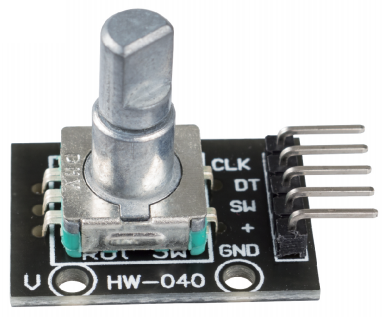Note
Hello, welcome to the SunFounder Raspberry Pi & Arduino & ESP32 Enthusiasts Community on Facebook! Dive deeper into Raspberry Pi, Arduino, and ESP32 with fellow enthusiasts.
Why Join?
Expert Support: Solve post-sale issues and technical challenges with help from our community and team.
Learn & Share: Exchange tips and tutorials to enhance your skills.
Exclusive Previews: Get early access to new product announcements and sneak peeks.
Special Discounts: Enjoy exclusive discounts on our newest products.
Festive Promotions and Giveaways: Take part in giveaways and holiday promotions.
👉 Ready to explore and create with us? Click [here] and join today!
Rotary Encoder Module¶

A rotary encoder is a position sensor that converts the rotation of a knob into an output signal, indicating the direction in which the knob is turned.
Rotary encoders are digital versions of potentiometers, offering greater versatility. They can rotate continuously, while potentiometers have limited rotation. Potentiometers indicate exact knob position, while rotary encoders show changes in position.
There are mainly two types of rotary encoders: absolute and incremental (relative) encoders. An incremental one is used in this kit.
Incremental encoders produce two-phase square waves, with a 90-degree phase difference commonly referred to as the A and B channels.
As illustrated below, when channel A transitions from a high level to a low level, if channel B is at a high level, it indicates that the rotary encoder is rotating clockwise (CW); if at that moment channel B is at a low level, it means the rotation is counterclockwise (CCW). Therefore, by reading the value of channel B when channel A is at a low level, we can determine the direction in which the rotary encoder rotates.

Example
2.1.6 Rotary Encoder Module (C Project)
2.1.6 Rotary Encoder Module (Python Project)